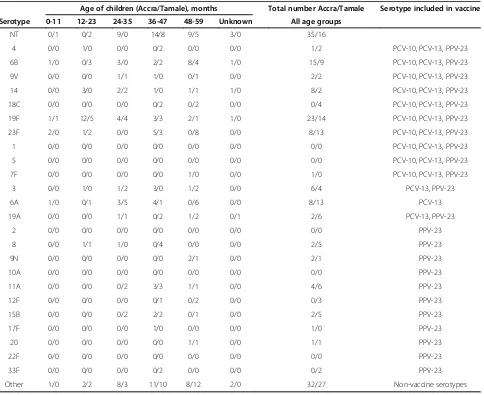Penicillin resistance and serotype distribution of Streptococcus pneumoniaein Ghanaian children less than six years of age
Full text
Figure



Related documents
Accuracy of sequential inter task clustering is compared with the existing MTSC scheme and the results show that the proposed scheme gives better accuracy. The following table 4.3
The socio- political and economic development of any nation is, in many ways influenced to a large extent by the quality and level of educational attainment of the citizens [1,
The inspector reviewed the centre's operating policies and procedures and noted that the centre had all site specific policies as required by Schedule 5 of the Health Act 2007
for 24 h induced cytotoxicity in a concentration-dependent manner (Figure 6). Cytotoxicity was not observed with honokiol concentrations up to 32 μ mol/l. In Figure 6, dose
Pre-processing : In this pre-processing stage first baseline wander is removed and then filtering is done to remove the noise. First baseline wander is estimated by using first
The Thy28-overexpressing (#3, #6, and #13) or control cells were stimulated with anti-IgM for the indicated time periods and analyzed for sub-G1 DNA content and cell cycle phase
This study deals with the analysis of accelerated life testing for Log-Logistic distribution using geometric process model.. The case of type-I censoring is considered in
These schools have been modeled on their success in neighbouring countries (cf. Arnove 1997; Gershberg 1999 on Nicaragua), and are jointly funded by the private sector,